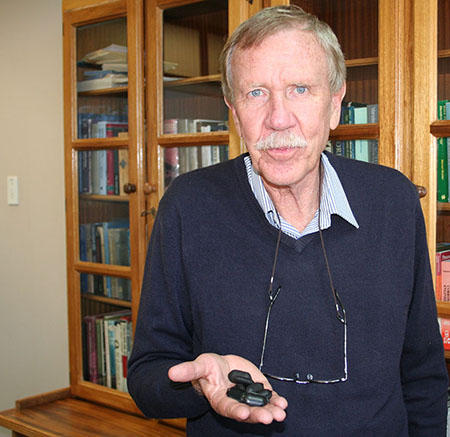Coal in its traditional form might soon be a relic of the past, but ground-breaking research by the North-West University (NWU) is showing how a face-lift to this fossil fuel has numerous safe, green possibilities. A revolutionary process to manufacture “green” coal that will reduce the amount of carbon dioxide emissions by up to 80% is being tested in a pilot study by the Centre of Excellence in Carbon-based Fuels.
Prof Frans Waanders, director of the centre, says all the resources used to manufacture the “green” coal are waste materials. “It makes the product unique and fairly cheap because companies are willing to pay third parties to get rid of their waste.

Prof Frans Waanders says they aim to produce enough of the green coal by 2019 to fill a gasifier at Sasol to test the full potential of the product. In the meantime, smaller amounts are being prepared for testing in conventional stoker burners, such as those being used at hospitals and even Eskom.
Value from waste
Frans says Sasol and Eskom have millions of tonnes of fine coal that they can’t use, which has to be stored in slime ponds because of the possibility of spontaneous combustion. This fine carbonaceous coal waste is converted into green coal by the addition of specially treated plant waste materials, such as grass, or even animal waste. “Our only stipulation is that no food products should be used in this process,” Frans says.
The result is a product known as char, which is produced by the bio-fuels research group at the Faculty of Engineering in their hydro-liquefaction pilot plant.
“To bind the coal and the plant-derived char, we use another waste product from Sappi, lignosulphonate, to manufacture green coal briquettes, which are about 25 mm in size,” Frans says. This specific size was tested to obtain the highest and most effective gasification conditions in the Sasol gasifiers, while the lignosulphonate binder prevents the briquettes from disintegrating when transported.
An important factor in the manufacturing process is that the new product should not be more expensive than existing products. “If for instance a tonne of charcoal costs R300 our product should also cost R300.”
Collaboration is key
Frans says the centre is excited about the progress made so far, especially about the collaboration among the different NWU research groups that have worked together to manufacture the green coal.
“This is a team effort by researchers from two different research chairs at the Faculty of Engineering, the SARChi Coal Research Chair of Prof John Bunt and the SARCHi Chair in Biofuels and Other Clean Alternative Fuels of Prof Sanette Marx.”
The NWU’s green coal is unique and is being patented. “We have registered the patent in almost all coal-producing countries in the world,” Frans says. “That means we own the international patent on our product, which was a lengthy and expensive process, but we felt it was all worth the effort. There are no patents in existence in the world on how to reduce greenhouse gases through the use of waste products.”
Frans says South Africa will have to live with coal-fired power stations for a long time to come, “whether we like it or not. We just have to manage it better and we have to make better use of our raw materials and natural resources in the country.
“With this new product we can definitely decrease our carbon dioxide emissions, as well as reduce acid rainfall caused by these harmful emissions.”
